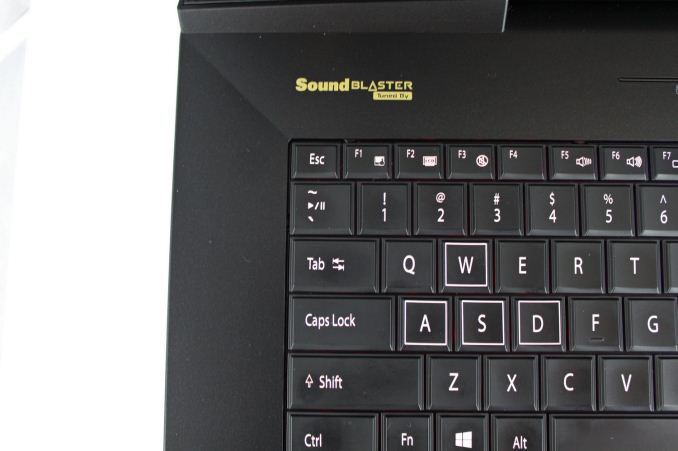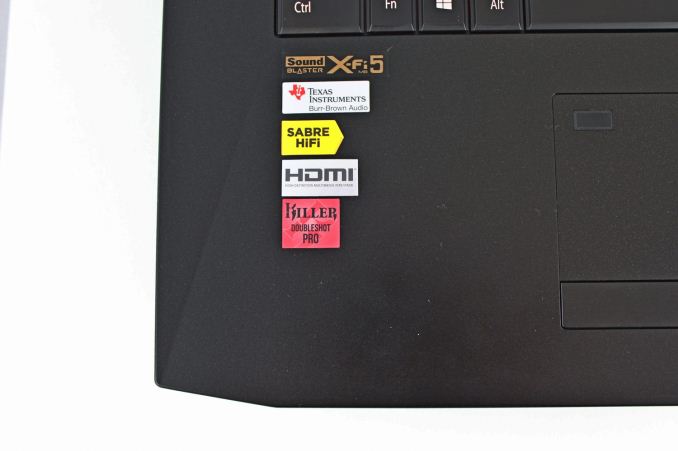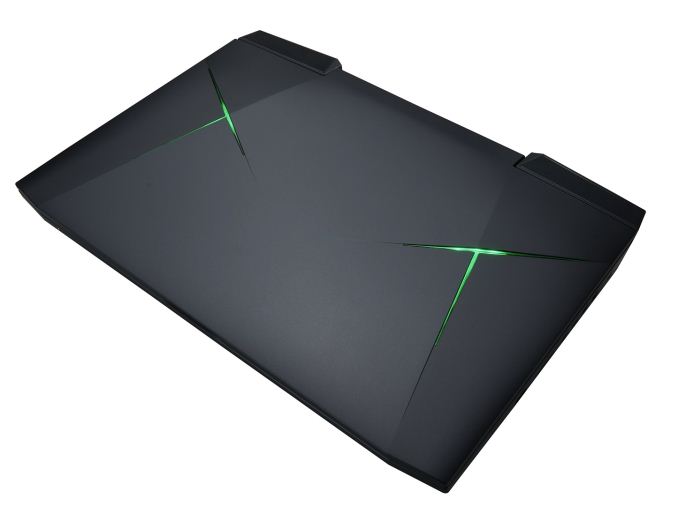The Clevo P870DM2 / Mythlogic Phobos 8716 Laptop Review: DTR With GTX 1080
by Brett Howse on October 27, 2016 2:00 PM ESTFinal Words
What else is there to say about this notebook? If you are after a desktop replacement, the market shrinks considerably, and very few companies offer desktop class processors in notebooks these days. Clevo is one of them, and they have shoehorned a full 91-Watt overclockable processor into this notebook. On CPU bound tasks, it is very likely that there is no other high volume notebook that is faster than this one. The performance is very impressive.
On the GPU side, there are plenty of options here too, but all of them based on the new Pascal architecture from NVIDIA. With just a 1920x1080 panel to push, even the GTX 1070 is going to have very good performance, but the GTX 1080 is such a big step up in the notebook market that it’s almost difficult to believe. It is basically twice as fast as the outgoing GTX 980M in real-world gaming tests. The GTX 980M was no slouch, but with NVIDIA moving to the full desktop class GPUs in notebooks this year, the jump in performance is as big as any seen in recent years. For those that really want the best of the best, Mythlogic offers this laptop with SLI GTX 1080 (or 1070), and choices of a 1920x1080 IPS 120 Hz display, 2560x1440 120 Hz G-Sync display, and 3840x2160 60 Hz G-Sync as well. The lower resolution display does have the advantage of being a 120 Hz display though, and the GTX 1080 can pretty easily drive most games at or above that refresh rate. The 2560x1440 seems like a great sweet spot for the non SLI models though, especially with G-Sync.
There are a lot of configurations available, which is typical of these types of systems, and it’s nice to be able to pick and choose your components a bit more than the larger OEMs allow. There is room for multiple M.2 SSDs, multiple 2.5-inch SSDs, and four SO-DIMM slots for memory. All of the components can be accessed through the bottom, or by removing the keyboard.
The chassis is far from the best around, with it being a large, thick, machine, made entirely of black plastic. The styling is ok though, with no crazy artwork or anything, and honestly for a notebook that is going to live its life on a desk, it is going to be absolutely fine.
What isn’t as fine is the keyboard. MSI has a fully mechanical keyboard in the GT83VR Titan, Razer has low profile mechanical switches in the new Razer Blade Pro, and Alienware has really worked hard at improving their keyboard as well with this generation. The Clevo keyboard feels like it is from about a decade ago, with very little travel despite the notebook being almost two inches thick. The keys themselves have very little bevel to them, and all of the keys are packed in so tight that it is very easy to lose where you are and hit the wrong key by mistake. If you are going to use this as a true desktop replacement, I suppose an external keyboard is an option, but it really shouldn’t need to be this way. The trackpad is just average, but here it’s difficult to be too critical since almost everyone that purchases a laptop like this is going to use it with a mouse.
At the end of the day, I am not the target market for this device. I have a desktop, and I haven’t moved houses in over a decade, but you can certainly see the appeal of having all the performance of a desktop in something you can move around a lot easier. Maybe you travel for work, or maybe you go to school, but being able to pick up a full desktop with the display attached and put it in a big is going to be a nice perk. And, even with all of these powerful components inside, the pricing is very reasonable. It’s hard to say something that starts at $2250 is inexpensive, but for what you get it is not. The base model still has a GTX 1070 and a desktop class 65-Watt CPU, and a 120 Hz display. You can tack on a lot of options to really drive up the price, but even this review unit with a GTX 1080, 32 GB of memory, and a Core i7-6700K still comes in under $3000. For that money, you won’t be able to find another laptop with this much performance available.













61 Comments
View All Comments
Drumsticks - Thursday, October 27, 2016 - link
The Surface AIO is not really a great choice for gaming. It's more a "Compete with Cintiq" type device, where they can get away with selling a 27" QHD touch+pen monitor for $2800.ZeDestructor - Thursday, October 27, 2016 - link
If the Surface AIO came in monitor-only form, I'd give it some pretty hefty consideration for use during onenote/collab sessions/RPG mapping and such.andychow - Thursday, October 27, 2016 - link
A 12 lbs laptop that has a battery life of one hour. Let's be real, you aren't moving this thing around. Just buy a desktop.RaichuPls - Thursday, October 27, 2016 - link
It could be useful as a product for somebody who moves around often, traveling a lot and using it in a hotel etc.Dribble - Thursday, October 27, 2016 - link
There's definitely a sliding scale of portability going from phone -> desktop. This sits between ultra book, and mini desktop pc. You're not going to use it on the train/plane, but it still fits in a laptop bag - you can take it too hotels, or even just take it on/off the kitchen table easily. While power isn't going to last on battery it will run for a while which is often enough.On the downside they are loud - anything 49 db new is going to get annoying loud when the fans clog up with dust. It's also hard to upgrade gpu's - you can upgrade memory and hd's easily enough, and these days the cpu is good for life but gpu's are still moving forward fast and you can end up with a laptop that is pretty current in everything but gpu performance after a few years.
ZeDestructor - Thursday, October 27, 2016 - link
At least you can upgrade the GPU, and by the looks of it, this has all the provisions to reliably feed 180W MXM-based modules for a long time too.TheinsanegamerN - Thursday, October 27, 2016 - link
assuming the BIOS can support newer GPUs, which is incredibly hit or miss.ZeDestructor - Friday, October 28, 2016 - link
Clevos are known to support it, by specifically not doing any UEFI/vBIOS level hackery. Basically just slaps the card in and routes out the extra DP connectors from the MXM slot to the physical ports and screen. Very desktop-style.bji - Thursday, October 27, 2016 - link
It would make a fine portable VR rig for those with lots of money to burn. I built a portable ITX system for about half the cost of the laptop, but there is no doubt that the laptop is even more portable and certainly much slicker with its built-in display, keyboard, and pointing solution (which are all separate components in my ITX build obviously).Only problem is that you can upgrade the ITX system with a new graphics card, but with the laptop, the graphics card you get is the only one you'll ever have.
doggghouse - Thursday, October 27, 2016 - link
Actually, one of Mythlogic's features is their Lifetime Phoenix Upgrade Plan, which lets you send your laptop back to them and upgrade whatever hardware you want. Assuming they are using some fairly standard components (Clevo?), you could in theory take your laptop with a GTX 780M card and upgrade it to GTX 1080 (or even go with a Radeon?!). I haven't seen reviews of how well it works, but I really like the concept. I personally have an Alienware laptop from 2011, and have seen people use some BIOS hacks to make newer GPUs work, since Dell sells some of those parts directly. I imagine if the company actually supported it, the concept would work even better!